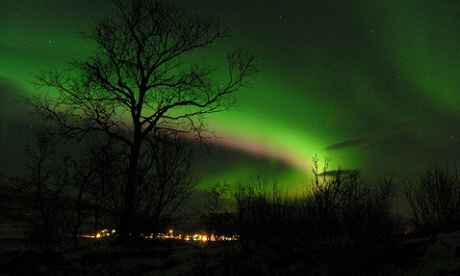
It’s the best year in half a century to ogle the aurora, says Lyn Hughes. Don't miss our top three places to check them out
There are some spectacles so extraordinary they make you cry at the wonder of it all. Or at least have a lump in the throat. Your first great whale. Quarter of a million king penguins on a beach in South Georgia. Or the northern lights in all their glory.
The first part of an auroral display usually comes from the east, as the earth rotates into the area of maximum activity. You’ll most likely see a pale green column first, but this may then grow into billowing sheets.
If you’re really lucky, the whole sky will be full of curving, twisting shapes. Although green is the most common colour, blue, orange and even red is occasionally seen – but this can be considered a bad omen by some, with many superstitions around it.
The best time to see the northern lights are on crisp, clear dark nights from September to early April; they won’t be so bright around full moons.
Auroral activity also ties in with an 11-year solar cycle, with displays at their best in 2012 and for three years afterwards. But NASA have actually predicted the 2012 aurora will be the best for 50 years, as it will be a solar maximum – a period when the sun’s magnetic field on the solar equator rotates at a slightly faster pace than at the solar poles, creating a period of greater solar activity than normal.
For your best chance of seeing the lights, head north to the auroral band that includes Lapland, Greenland, far north Canada and Alaska. Aurora-chasing trips, like those offered by Specialised Tours and The Aurora Zone use local knowledge to put you in the best spots to see and photograph the lights. But if you’re happy to take your chances night by night, here are three trips that combine the lights with other memorable experiences.
Rather than simply marvelling at the aurora’s mysteries, you can learn the science behind it on a special voyage with the BBC’s Dr John Mason. Sail up the Norwegian coast from Bergen to Kirkenes and back to Trondheim, sky-gazing by night and unravelling the myths, legends and constellations of the Arctic by day.
Getting started: Hurtigruten’s 10-night Northern Lights Astronomy Voyage costs from £1,095 (plus £50 fuel surcharge), based on two sharing a cabin; price excludes flights. Departs 20 January and 15 March.
Wildlife-lovers may be lucky enough to spot both orcas and the aurora borealis from their hotel room on a brand new trip in Iceland. Based in a remote fishing village on the Snaefellsnes Peninsula, you’ll spend mornings out on the water to get up close with the orcas, while in the afternoons you can hike, go on volcanic tours or visit local museums. And at night: it’s lights time.
Getting started: Discover the World’s Killer Whales & Northern Lights trip departs in Feb and March, from £850pp (plus flights).
For the best view of the lights, you want the least light pollution – and views don’t come much clearer than from an electricity-free wilderness cabin deep in the forests of Finnish Lapland. You can reach one of these fairytale (but basic) huts on an overnight snowmobile or husky safari from Davvi Arctic Lodge in Karesuando. This is also a great place to learn about Sami culture: visit a reindeer camp for a herding masterclass.
Getting started: Transun’s 7-night Northern Lights trip to Karesuando costs from £1,049 including flights; regional departures until April.
Take a look at our northern lights travel guide for trip inspiration | Plan a trip... More
Top 6 places to see the northern lights | Inspire me... More
6 ultimate Arctic adventures | Inspire me... More
Stay safe when you're hunting the aurora with our cold weather advice | Advice... More
Snoozing in the original Ice Hotel | Destinations... More